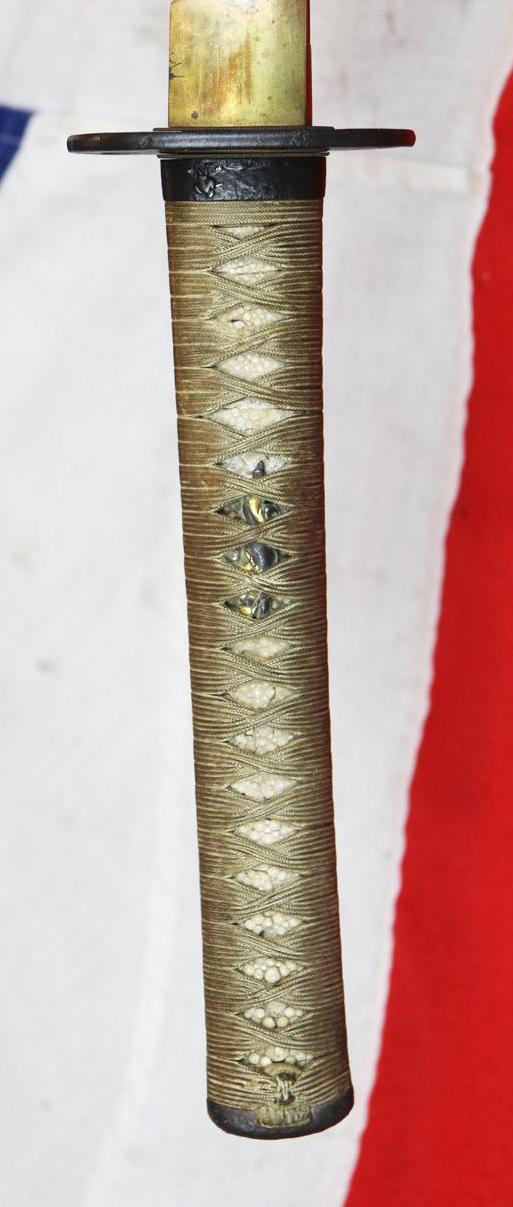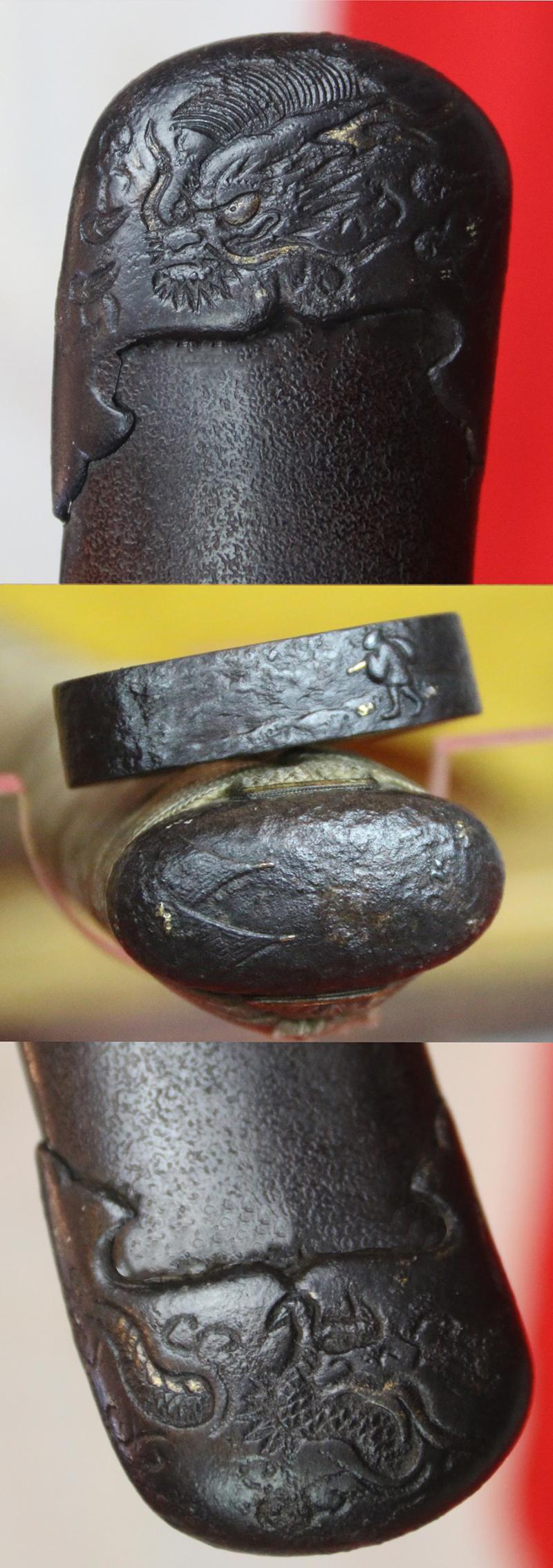A Stunning and Impressively Powerful Koto Katana, Circa 1500. With All Original Edo Period Koshirae Mountings. A Fabulous Sword of Likely a Seieibushi {the Highest Ranked Elite Samurai} Traditionally the Highest Rank of Elite Samurai
Originally made around 500 years ago for a samurai of considerable size and status befitting a sword of this power and presence. Photos of the blade to add Friday 12th
It bears a beautfully fine Koto blade, around 1500, yet, most rarely it shows it is ubu {unshortened} and it displays a very fine suguha hamon, very much the usual tradition during the Koto period.
Most blades of this age have had some element of shortening, which is entirely usual, and most normal.
Shortening most commonly occurs when a successor to the original katana owner, another samurai, was shorter than his predecessor, and thus so on, and thefore needs the blade slightly shortened {always from the bottom of the nakago under the hilt upwards, even if it’s just by an inch or so}. Very ancient blades can often show evidence of several shortenings, by the presence of numerous mekugi ana interspaced down the tang.
The all original Edo period mounts, fuchi kashira, are Higo style in tetsu, decorated with a takebori cormorant fisherman carrying his catch to market, on the fuchi, and his hanging nets on the kashira. The tsuba, also in finely aged tetsu, tsuchime, with very delicate Amidayasuri filemarks, or carving, representing the halo emanating from Amida Buddha, is very beautiful, impressive and signed, with two, most unusually still present, narrow bars of sinchu bordering the inner kogai hitsu-ana and kozuka hitsu-ana, these are more than often lost .
It appears the mei {signature} on the tsuba is 山吉 or Yamakichi bei who was originally an armour smith from Owari or modern Nagoya area.
The shodai worked around the same time as the first Nobuie (end of Muromachi) and nearly as highly regarded, but this example may well be later. Pale gold tsukaito silk binding over pure gold decorated shakudo menuki on the samegawa {giant rayskin}.
The saya is traditional and original Edo period, brown urushi, ishime style, stone finish lacquer, in very fine condition, and the saya is mounted with a Higo sayajiri depicting a dragon in light takebori tettsu.
When one considers this sword was carried by successive samurai from the British timeline of the Tudor kings, starting with King Henry VIIth, King Henry VIIIth’s father, it is in simply remarkable condition. We doubt of there is a single solitary example of a European sword of this great age, preserved anywhere near as well as this blade, that is appearing almost as new.
The samurai were roughly the equivalent of feudal knights. Employed by the Shogun or Daimyo, they were members of hereditary warrior class that followed a strict "code" that defined their clothes, armour and behaviour on the battlefield. But unlike most medieval knights, samurai warriors could read and they were well versed in Japanese art, literature and poetry.
Samurai endured for almost 700 years, from 1185 to 1867. Samurai families were considered the elite. They made up only about six percent of the population and included daimyo and the loyal soldiers who fought under them. Samurai means one who serves."
Samurai were expected to be both fierce warriors and lovers of art, a dichotomy summed up by the Japanese concepts of to stop the spear expanding into bushido (the way of life of the warrior) and bun (the artistic, intellectual and spiritual side of the samurai). Originally conceived as away of dignifying raw military power, the two concepts were synthesised in feudal Japan and later became a key feature of Japanese culture and morality.The quintessential samurai was Miyamoto Musashi, a legendary early Edo-period swordsman who reportedly killed 60 men before his 30th birthday and was also a painting master. Members of a hierarchal class or caste, samurai were the sons of samurai and they were taught from an early age to unquestionably obey their mother, father and daimyo. When they grew older they may be trained by Zen Buddhist masters in meditation and the Zen concepts of impermanence and harmony with nature. The were also taught about painting, calligraphy, nature poetry, mythological literature, flower arranging, and the tea ceremony.
it has been said that part of their military training, samurai were taught to sleep with their right arm underneath them so if they were attacked in the middle of the night and their the left arm was cut off the could still fight with their right arm. Samurai that tossed and turned at night were cured of the habit by having two knives placed on either side of their pillow.
Samurai have been describes as "the most strictly trained human instruments of war to have existed." They were expected to be proficient in the martial arts of aikido and kendo as well as swordsmanship and archery---the traditional methods of samurai warfare---which were viewed not so much as skills but as art forms that flowed from natural forces that harmonized with nature.
An individual didn't become a full-fledged samurai until he wandered around the countryside as begging pilgrim for a couple of years to learn humility. When this was completed they achieved samurai status and receives a salary from his daimyo paid from taxes (usually rice) raised from the local populace. Swords in Japan have long been symbols of power and honour and seen as works of art. 40 inches long overall, blade tsuba to tip, 28.5 inches
Code: 25215
9450.00 GBP









